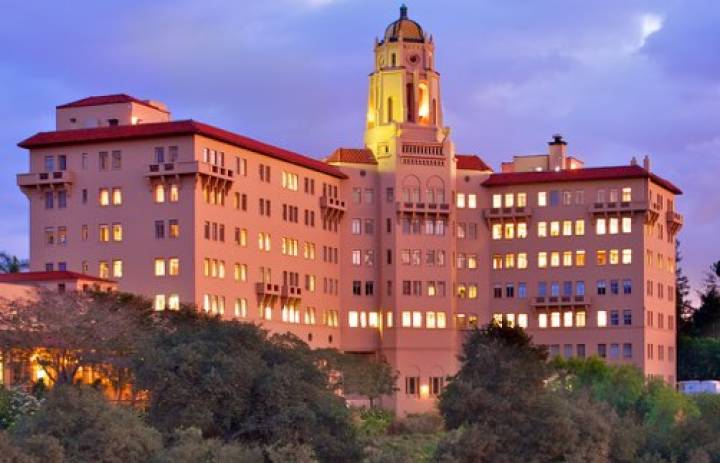This is an old revision of the document!
Fact Check
Axanar's Chances on Appeal
After Losing Its Fair Use Defense, How Much Can Axanar Count on the ‘Liberal’ Ninth Circuit?
Table of Contents
See also: Judge Denies Axanar Its Fair Use Defense
Producer Alec Peters tried to put a hopeful spin on what had to be a crushing blow in a federal judge’s January 4 ruling that Axanar lost its fair use defense to CBS and Paramount’s allegations of copyright infringement.
Peters' Statement
Peters’ official statement glossed over the heavy blow federal Judge R. Gary Klausner dealt to his case by focusing on Axanar’s prospects at the next level in the federal legal system — the Ninth Circuit Court of Appeals.
 FACT CHECK is an AxaMonitor series examining claims made with regard to Axanar, chiefly Alec Peters’ blog posts, interviews and public announcements. Read the series »
FACT CHECK is an AxaMonitor series examining claims made with regard to Axanar, chiefly Alec Peters’ blog posts, interviews and public announcements. Read the series »
Depending on the outcome of the trial, Axanar may choose to appeal the verdict to the Ninth Circuit, where [Axanar attorney] Erin Ranahan is 5-0. The Ninth Circuit Court of Appeals is also known to favor artist rights. So the story of Axanar continues …1)
The Real Record of the Ninth Circuit
The Ninth Circuit is famously known as the most liberal circuit in the United States, with most of its judges appointed by Democratic presidents.
Back in September 2016, Peters had already begun to assess Axanar's chances at appeal:
This case is being held in Southern California, and if it gets appealed it’ll get appealed to the Ninth Circuit – one of the most liberal circuits in the country, and pro-artists’ rights. Even if we were to lose at trial, an appeal would likely be very positive for us.
Most Liberal?
However, the “most liberal circuit” characterization is not based on fact. It’s a longstanding trope of the conservative media that is largely based on the number of Ninth Circuit cases that have been reversed by the Supreme Court. But that has more to do with the disproportionate number of cases heard by the Ninth Circuit — which covers nine states and about 20 percent of the U.S. population — than the ideological inclinations of the judges who sit on its bench.
The Biggest Circuit
One consequence of the Ninth Circuit’s size is that it has 29 full-time judges — far more than any other circuit (the next largest has only 17). There are also “senior judges” who continue to work part-time. Currently, there are 25 full-time judges, 19 part-time judges, and 4 full-time vacancies. Additionally, retired Supreme Court Justice Sandra Day O’Connor occasionally sits in on Ninth Circuit cases.
How the Court Hears Appeals
Appeals are usually heard by randomly selected three-judge panels. So there’s a current pool of 45 judges who could be assigned to a potential Axanar appeal (not including any potential Trump appointments to fill the four vacancies). Therefore, while it’s true a majority of these judges were appointed by Democratic presidents, that does not in and of itself guarantee a “liberal” panel for a particular case.
Pro-Artist or Anti-Corporate?
Peters’ assertion that the Ninth Circuit is “pro-artists’ rights” doesn’t appear to be based on any real data. The Ninth Circuit enforces the same copyright laws as every other circuit. If the court were “pro-artist,” wouldn’t that favor stronger copyright protections? Perhaps Peters meant to say the Ninth Circuit was anti-corporation, but that isn’t borne out by data either.
The Data on Appeals
Peters claimed: “Even if we were to lose at trial, an appeal would likely be very positive for us.”
But the truth is that appeals generally don’t favor the party appealing. The Administrative Office of the U.S. Courts tracks this data, and according to the most recent figures appeals decided between July 1, 2015, and June 30, 2016, the Ninth Circuit its reversed its trial courts’ “other private civil” decisions only 16.3 percent of the time. That refers to appeals in civil cases where the federal government or a prison inmate was not a party.2)
While this is a higher reversal rate than most circuits, it still means there’s a roughly 85 percent chance the Ninth Circuit would affirm a jury verdict in favor of CBS and Paramount.
Ranahan's 5-0 Record
Peters’s statement touted its attorney Ranahan’s successful “5-0 record” of appeals before the Ninth Circuit. AxaMonitor has only been able to confirm four such cases where she was listed as counsel, but in none of them was she “counsel of record,” the lead attorney who actually argued the case. And two of those four cases were voluntarily dismissed before the Ninth Circuit issued a decision.
Axanar's Chances
The two most relevant cases where Ranahan was listed (again, not as the lead attorney) don’t really shed much light on how the Ninth Circuit would respond to an appeal in a case like Axanar’s. The first case, UMG Recordings, Inc. v. Shelter Capital Partners, involved the application of the safe harbor provision under the Digital Millennium Copyright Act. The second case, Graham-Sult v. Clainos, dealt with misappropriation of intellectual property.
In both cases, Ranahan’s client supported affirming, not reversing, the district court. That’s critical because, as noted above, affirmed decisions are statistically much more likely than reversals. And in Graham-Sult, the Ninth Circuit actually reversed on one issue, against the position advocated by Ranahan’s client. 
Keywords



